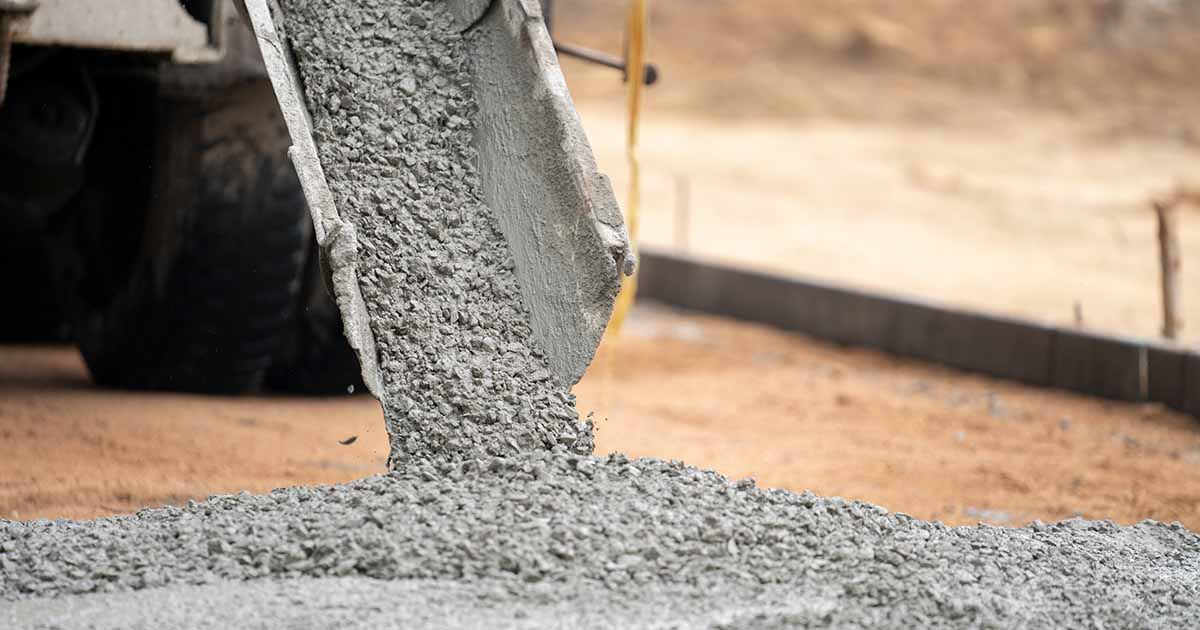Welcome to the BNE Blog – Your Trusted Source for Concrete Flooring Insights!
At BNE Concrete Floors & Coatings, we're more than just experts in concrete flooring solutions; we're enthusiasts who are passionate about sharing our knowledge and experience.
Our blog features the latest industry news, concrete solutions for various industries, and essential tips for maintaining your concrete floors.
Whether you're exploring flooring options for industrial use, seeking stylish and sustainable polished concrete solutions, or looking for maintenance advice, our blog is your guide! Join us in exploring the sophisticated and practical world of concrete flooring.
Each tag category in our blog is designed to guide, inform, and inspire you about the endless possibilities of concrete flooring.
You can navigate our blog with the blog tags below:
Concrete Industry News: Stay updated with the latest trends and developments. We provide insights into new technologies, market trends, sustainability initiatives, and regulatory changes impacting the concrete industry.
Industry Specific: We dive into how concrete solutions uniquely benefit various sectors like grocery stores, automotive facilities, and healthcare institutions. Learn about tailored flooring needs, durability demands, and aesthetic considerations for each industry, and how concrete flooring meets these specific requirements with efficiency and style.
Concrete Maintenance/Repair Tips: Gain insights on how to effectively preserve and care for your concrete surfaces. Learn about cleaning techniques, repair strategies, and preventative measures to extend the lifespan and appearance of your concrete flooring, ensuring it remains durable and visually appealing for years to come.
Epoxy Floor Coatings: Learn how these durable, chemical-resistant coatings are ideal for various applications, from industrial and commercial spaces to stylish residential areas, offering easy maintenance and a range of aesthetic options.
Polished Concrete Floors: Discover how this sleek, modern flooring option not only enhances the aesthetic of any space but also offers durability, low maintenance, and eco-friendliness. Ideal for various settings from homes to high-traffic commercial areas, polished concrete floors are a versatile choice that melds style with functionality.

Without even realizing it, concrete is fundamental to our daily lives, forming the very foundation upon which our transportation systems rely.
Whether it's the highways we drive on, the bridges we cross, or the tunnels we pass through, concrete ensures the safety, reliability, and longevity of these vital structures.
Imagine a world where concrete isn't placed correctly – where bridges develop cracks, roads deteriorate rapidly, and transit systems face frequent disruptions. The consequences of subpar concrete placement are far-reaching, affecting not only the safety of commuters but also the financial burden of repairs and maintenance on governments and taxpayers.
In this blog post, we will look into the critical aspects of concrete placement in transit infrastructure projects.
At BNE, we are trusted experts in concrete finishing. We have the knowledge, equipment, and skills to properly install concrete for any type of project. We use industry-leading technology and expertise to provide the client with a concrete structure that will last. Our clients seek us out because we are a single source providing concrete finishing, polish and epoxy. This saves them time, money, and the hassle of communicating their needs to various contractors. Do not hesitate to reach out to us for your next construction project. We are just one phone call or email away!
While concrete might appear as a straightforward building material, its successful placement requires careful attention to detail. Adhering to best practices in concrete placement ensures that the roads and structures maintain their structural integrity. Properly placed concrete is less likely to develop cracks, weaknesses, or structural failures over time.
Since proper placement can make all the difference, here are some best practices all individuals in the construction industry must adhere to:
Safety: Best practices prioritize safety during the concrete placement process, reducing the risk of accidents or injuries to workers and the public. Properly placed concrete minimizes hazards associated with construction.
Longevity: Concrete structures built following best practices tend to have a longer lifespan. They are better equipped to withstand environmental factors, wear and tear, and heavy traffic loads, reducing the frequency of repairs and maintenance.
Cost Savings: By avoiding mistakes and issues associated with improper concrete placement, projects can save significant costs in the long run. Repairs and retrofitting due to placement errors can be expensive and time-consuming.
Efficiency: Best practices streamline the concrete placement process, making it more efficient and reducing downtime. This helps keep construction projects on schedule and within budget.
Environmental Impact: Proper concrete placement practices can also be more environmentally friendly. This includes using the right concrete mixtures and curing methods to reduce waste and energy consumption.
Reduced Strength: Improperly placed concrete may not achieve its designed strength, compromising the overall structural integrity of the infrastructure.
Cracking: Poorly placed concrete is more prone to cracking, which can lead to water infiltration, corrosion of reinforcement, and further deterioration.
Safety Risks: Structural issues resulting from improper placement can pose safety risks to both construction workers and the public who use the infrastructure.
Increased Maintenance: Infrastructure with placement issues requires more frequent maintenance and repairs, increasing long-term costs.
Project Delays: Addressing placement-related problems can lead to project delays, impacting timelines and budgets.
Legal and Liability Issues: If improper placement leads to accidents or structural failures, it can result in legal liabilities for construction companies and project stakeholders.
Choosing the right concrete mix for transit infrastructure influences the project's performance and lifespan.
The composition of the concrete mix should be meticulously tailored to meet specific project requirements, considering factors like desired strength levels to bear heavy loads, durability to withstand environmental conditions, and adaptability to weather conditions that can affect curing and setting times.
The rate at which concrete cures and gains strength is highly dependent on temperature. Extreme temperatures, whether too hot or too cold, can negatively impact the quality and long-term performance of the concrete.
Hot weather can cause rapid curing, leading to potential cracking and reduced strength
Cold weather can slow down curing, potentially causing delayed setting times and lower early strength development.
To ensure proper strength and durability, curing techniques are used immediately after concrete placement.
These techniques typically involve keeping the concrete surface moist and at the right temperature for an extended period. This prevents moisture loss, allowing the concrete to fully hydrate and develop its intended strength and durability.
Curing methods can include:
Covering the concrete with wet burlap
Applying curing compounds
Using curing blankets and insulated enclosures, depending on the project's requirements and environmental conditions.
Proper temperature control and curing are essential to maximize the performance and longevity of transit infrastructure elements constructed with concrete.
There is more than one way to get the job done. The suitability of each concrete placement method depends on factors like project scope, access constraints, required finish quality, and environmental conditions.
Choosing the right method is critical to ensuring that concrete is placed efficiently and meets the specific needs of the transit infrastructure project. Here is a look at some of the most commonly used methods:

Pouring: Traditional concrete pouring involves mixing concrete at the construction site and manually placing it into molds or formwork. It is a widely used method for various transit infrastructure projects, including roadways, bridge decks, and building foundations. It offers flexibility and control over placement but may be labour-intensive and slower for large-scale projects.
Pumping: Concrete pumping utilizes specialized equipment to transport mixed concrete from a central location to the placement area through a network of pipes and hoses. This method is particularly useful for projects with challenging access points or when significant distances need to be covered, such as high-rise buildings or long-span bridges.
Shotcrete: Shotcrete, or sprayed concrete, involves pneumatically projecting a pre-mixed or dry concrete mixture onto a surface using a high-velocity nozzle. It is commonly used for tunnel linings, retaining walls, and slope stabilization due to its adaptability to complex shapes and surfaces. Shotcrete provides excellent bonding and can be applied quickly, making it suitable for transit infrastructure projects requiring rapid construction.
Precast Concrete: In this method, concrete elements are precast in a controlled environment, such as a factory, and then transported to the construction site for assembly. Precast elements like beams, columns, and panels are commonly used in transit infrastructure for their quality control, durability, and rapid installation. This method is suitable for various applications, including subway stations and parking structures.
Slipforming: Slipforming is a continuous method where concrete is poured into a continuously moving formwork system, shaping structures like curbs, barriers, and parapets. It is efficient and suitable for projects requiring uniformity and long, linear elements, such as highway barriers and traffic dividers.
Self-Consolidating Concrete (SCC): SCC is a mix design that flows easily and consolidates under its weight without the need for mechanical vibration. It is suitable for complex and densely reinforced transit infrastructure elements, such as columns and bridge piers, where traditional placement methods might be challenging.
Tremie Concrete Placement: Tremie pouring involves using a vertical pipe to place concrete underwater, commonly used in the construction of underwater foundations, bridge piers, and marine structures. It prevents segregation of aggregates and ensures proper consolidation.
There are always a number of challenges to navigate in the construction industry. Here are some of the most common when placing concrete.
Time Sensitivity: Transit infrastructure projects often have tight timelines. The rapid setting of concrete in hot weather or delayed setting in cold weather can pose challenges to proper placement and finishing.
Traffic Interruptions: On transportation projects, such as road and bridge construction, traffic management is essential. Concrete placement needs to be coordinated to minimize disruptions to commuters.
Weather Variability: Weather conditions, including extreme temperatures, rain, or humidity, can affect the concrete placement process and compromise the quality of the finished product.
Concrete Mix Consistency: Achieving consistent concrete mix properties on large-scale projects can be challenging, leading to variations in strength, durability, and workability.
Complex Structures: Projects involving intricate structural designs or unusual shapes may require specialized concrete placement methods to ensure uniformity and structural integrity.
Quality control measures in concrete placement involve ensuring that the concrete meets the specified standards, both in terms of its composition and placement conditions. This includes verifying the concrete mix design, monitoring the temperature, slump, and consistency of the fresh concrete, and conducting regular tests for factors like air content and compressive strength to maintain consistency and compliance with project requirements.
Throughout the placement process, quality control requires diligent monitoring and testing to identify and address any deviations or issues promptly. What is most important is ensuring that the final product meets the required standards for strength, durability, and performance in transit infrastructure projects.
At BNE, we are trusted experts in concrete finishing. We have the knowledge, equipment, and skills to properly install concrete for any type of project. We use industry-leading technology and expertise to provide the client with a concrete structure that will last. Our clients seek us out because we are a single source providing concrete finishing, polish and epoxy. This saves them time, money, and the hassle of communicating their needs to various contractors. Do not hesitate to reach out to us for your next construction project. We are just one phone call or email away!

